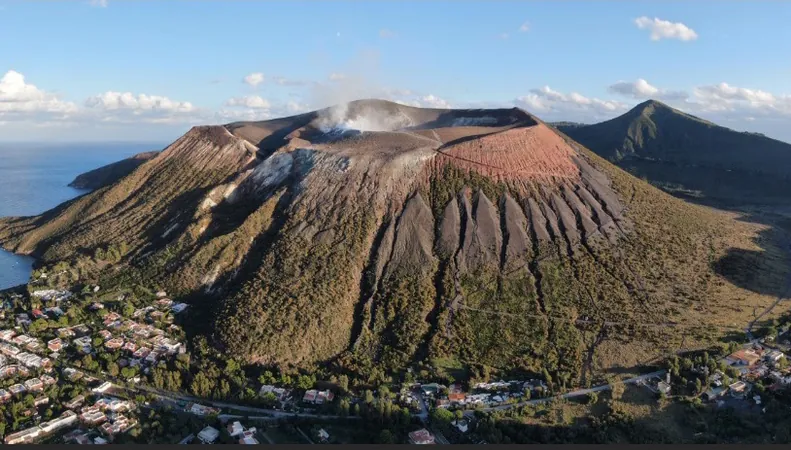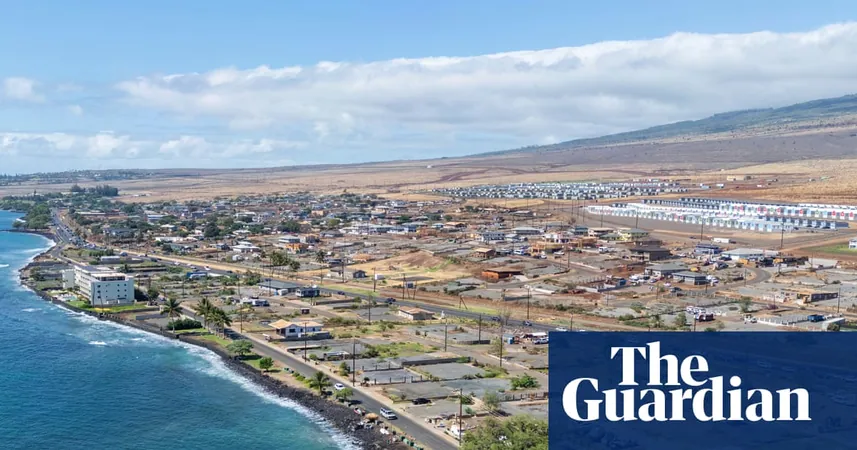
Unlocking the Secrets of Vulcano: Scientists Create 3D Map of Turbulent Volcano
2025-09-15
Author: Charlotte
The Troubled Island of Vulcano
Nestled in the Tyrrhenian Sea, the isle of Vulcano is part of the stunning Aeolian archipelago in southern Italy. This volcanic gem has experienced explosive eruptions throughout its past, the last of which rattled its surface between 1888 and 1890. However, since 2021, signs of turmoil have emerged from beneath its surface, with active hydrothermal systems indicating intermittent magma and gas flows. This recent unrest raises concerns, especially as summer brings swarms of tourists to the island, potentially placing them at risk of sudden volcanic activity.
Revolutionary 3D Mapping Technique
In a bid to decipher the underlying causes of Vulcano's unrest, researchers from the University of Geneva joined forces with Italy’s National Institute of Geophysics and Volcanology (INGV). Together, they've embarked on an ambitious project to create a high-resolution 3D model of the volcano's interior. By leveraging an innovative combination of nodal seismic networks and cutting-edge artificial intelligence (AI), they're pushing the boundaries of what's possible in volcanic monitoring.
Unprecedented Insights Into Volcanic Dynamics
Historically, the exploration of volcanic depths has been a challenge, with previous studies relying on superficial outlines rather than delving deep into the geological mysteries. Traditional methods often fall short of revealing crucial details about the volatile plumbing systems that can lead to eruptions. Recent research had only begun to sketch the boundaries of these systems, lacking the resolution to differentiate between magma and hydrothermal components.
How the 3D Model Was Created
To investigate the factors contributing to Vulcano's unrest, the researchers meticulously deployed a grid of 196 seismic sensors across both Vulcano and neighboring Lipari. This network measured secondary seismic waves, or S-waves, through a technique known as ambient noise tomography. As S-waves traverse fluid-saturated zones, they illuminate the presence of magma.
By harnessing AI and deep neural networks, the team rapidly processed the vast seismic data and generated a detailed 3D velocity model. This model serves as an 'X-ray' of the volcano, capturing natural ground vibrations over the course of a month during the early phases of unrest.
Key Findings and Implications
The findings revealed an absence of new magma bodies close to surface levels; however, they identified regions where cooling melts are situated at the base of the hydrothermal system. These melts, if disturbed by seismic activity, could release gases and fluids, implying that tectonic movements could instigate volcanic turmoil. Researchers infer that the volcanos' recent unrest may have been aggravated by fault activity.
A Step Towards Safer Futures
While this groundbreaking methodology does not pinpoint eruption timelines, it significantly enhances understanding of volcanic behavior during unrest. By utilizing AI, researchers can process data swiftly, potentially transforming this research into an early warning system that monitors volcanic activities in real-time.
This could ultimately facilitate dynamic evacuation strategies based on real-time volcanic behavior, saving countless lives. Despite the complexity of processing massive datasets quickly, advancements in machine learning and deep learning are making this vision attainable.
The Road Ahead
Lead researcher Douglas Stumpp notes that this study lays the groundwork for future 4D ambient noise tomography, encompassing three-dimensional spatial awareness along with a temporal dimension. To realize this aspiration, he emphasizes the necessity of establishing permanent seismic networks with telemetric data access. The journey to mastering volcanic unpredictability is just beginning!









 Brasil (PT)
Brasil (PT)
 Canada (EN)
Canada (EN)
 Chile (ES)
Chile (ES)
 Česko (CS)
Česko (CS)
 대한민국 (KO)
대한민국 (KO)
 España (ES)
España (ES)
 France (FR)
France (FR)
 Hong Kong (EN)
Hong Kong (EN)
 Italia (IT)
Italia (IT)
 日本 (JA)
日本 (JA)
 Magyarország (HU)
Magyarország (HU)
 Norge (NO)
Norge (NO)
 Polska (PL)
Polska (PL)
 Schweiz (DE)
Schweiz (DE)
 Singapore (EN)
Singapore (EN)
 Sverige (SV)
Sverige (SV)
 Suomi (FI)
Suomi (FI)
 Türkiye (TR)
Türkiye (TR)
 الإمارات العربية المتحدة (AR)
الإمارات العربية المتحدة (AR)